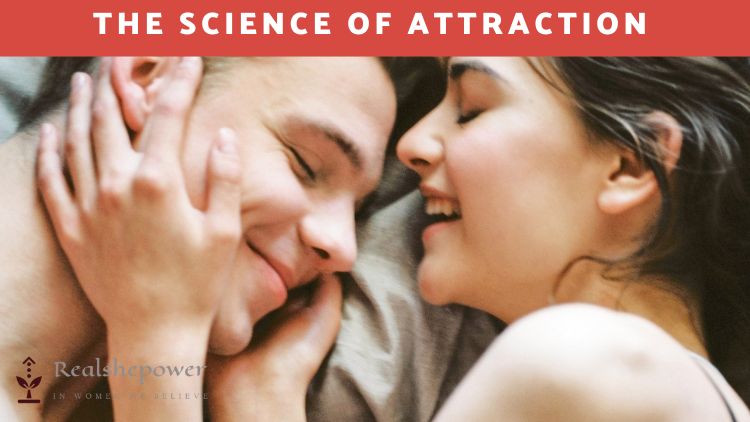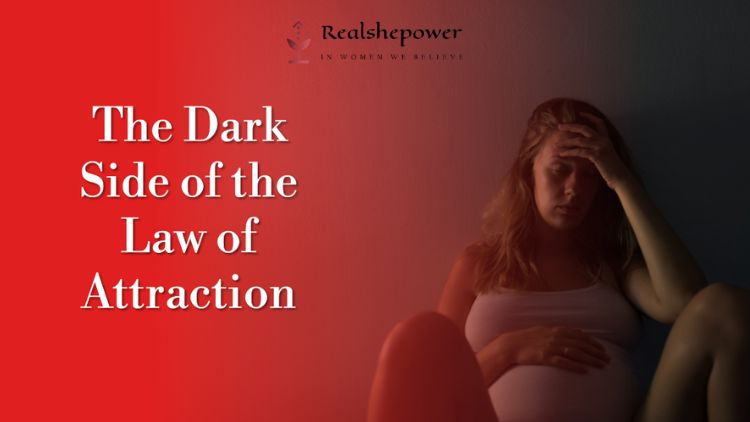The Science of Attraction: What Draws us to Certain People and the Psychology Behind it


What is it that draws us magnetically towards certain individuals? Why do we find ourselves irresistibly pulled towards some people, forming a connection that seems almost scripted by destiny? The answers lie within the fascinating and complex realm of the science of attraction. This intricate interplay of psychological factors, biology, and social influences shape our preferences, determining who we find attractive. This article dives deep into the maze of attraction, unraveling the psychological principles that dictate this fundamental aspect of human interaction.
Table of Contents
Unveiling the Psychology of Attraction
The world of attraction is a labyrinth, laden with multifaceted dimensions that intrigue and baffle us in equal measure. Why do we feel a certain pull towards some people, an inexplicable connection that transcends rationale? The answer to this question lies in the intricate and fascinating field of psychology. Let’s take a deep dive into the psychological intricacies that orchestrate the phenomenon of attraction.
Attraction isn’t a random process, governed by whims or caprices. Instead, it’s a deeply rooted, innate mechanism, essential for the continuation of our species. This primal force influences our choices, guiding us towards potential mates and facilitating reproduction. While it may seem complex and elusive, the psychological principles that govern attraction can be traced back to several key factors, such as physical attractiveness, proximity, familiarity, similarity, and reciprocal liking.
1. Physical Attractiveness: The Primal Appeal
The allure of physical attractiveness is undeniable and universal. Studies suggest that physical appearance significantly influences our attraction towards others, driven by an unconscious preference for features that signal good health, fertility, and potential genetic advantages. Women with features such as symmetrical faces, full lips, and a low waist-hip ratio are often perceived as attractive, reflecting signs of youth and fertility. In contrast, men with traits like broad shoulders, a high waist-shoulder ratio, and a strong jawline are considered attractive, signifying strength, virility, and the ability to provide and protect.
While these preferences vary across cultures and personal tastes, the underlying principle remains the same: Our biological inclination for reproductive fitness steers our perception of physical attractiveness. This preference, largely unconscious, is embedded in our DNA, an evolutionary adaptation aimed at ensuring the survival and propagation of our genes.
2. The Power of Proximity and Familiarity
Geographical closeness, or proximity, also plays a pivotal role in shaping attraction. According to the propinquity effect, the more frequently we encounter someone, the more likely we are to be attracted to them. This principle suggests that our chances of forming relationships with people increase dramatically when we live, work, or spend time in close proximity to them.
Closely linked with proximity is the mere-exposure effect. This psychological phenomenon posits that our attraction towards others increases with familiarity. The more we are exposed to a person, the more attractive and likable they appear to us. This preference for the familiar is believed to stem from the comfort and predictability it provides. In an uncertain world, the known feels safer and more desirable, enhancing the appeal of those we are familiar with.
3. Similarity: A Magnetic Force
“Opposites attract” may be a popular saying, but when it comes to romantic attraction, evidence points in the opposite direction. We are more likely to be drawn to people who are similar to us – those who share our attitudes, values, backgrounds, and lifestyles. This principle, known as homophily, operates on the assumption that like-minded individuals understand each other better, validating our perspectives and providing a sense of comfort and familiarity. The predictability that comes with similarity reduces potential conflicts and misunderstandings, making the relationship feel more secure and harmonious. In this sense, similarity acts as a magnetic force, pulling us towards those who reflect our own characteristics and worldviews.
4. Reciprocal Liking: The Joy of Being Liked
There’s something incredibly appealing about knowing that someone is attracted to us. This phenomenon, known as reciprocal liking, is another cornerstone of attraction. When someone expresses an interest in us or responds positively to our advances, it validates our self-worth, making us feel desirable and confident. This, in turn, amplifies our attraction towards them, creating a positive feedback loop of mutual attraction and appreciation.
5. Attraction Beyond the Surface
While the aforementioned factors significantly influence attraction, the essence of this elusive phenomenon transcends beyond the tangible. Our brain, the orchestrator of attraction, employs complex neurochemical processes to facilitate this compelling sensation.
Falling for someone triggers a cocktail of neurochemical reactions in our brain. Dopamine, the ‘feel-good’ neurotransmitter, spikes, engendering feelings of pleasure and reward. Simultaneously, the release of oxytocin, the ‘love hormone,’ facilitates bonding and intimacy.
A Deeper Understanding: Psychological Theories of Attraction
Attraction isn’t simply a case of ‘I like the way you look.’ It’s a complex psychological process that’s been the subject of extensive study. Several theories attempt to explain this enchanting phenomenon, each highlighting different elements of our psychological makeup that contribute to the people we find attractive. Let’s dive into some of these pivotal theories.
1. Reinforcement-Affect Model
One of the central theories in understanding attraction is the reinforcement-affect model. This theory, rooted in behaviorism, proposes that we’re more likely to be attracted to people who make us feel good. It’s essentially a theory of association – we tend to link positive feelings with the people who are around when we experience them.
This can happen directly, such as when someone compliments us, supports us, or makes us laugh. These positive experiences often create a sense of attraction towards the person associated with those pleasant emotions. It can also occur indirectly. For instance, if you happen to meet someone when you’re in a good mood or when you’re enjoying yourself at a party, you might associate those positive feelings with that person, thereby increasing your attraction towards them.
2. Social Exchange Theory
Another influential theory is the social exchange theory, which operates on a somewhat more pragmatic level. This theory views personal relationships as a sort of economic exchange. We tend to be attracted to relationships that provide the maximum rewards (like companionship, affection, support) at the lowest cost (conflict, effort, time).
According to this theory, we continually assess our relationships’ ‘profit’ (rewards minus costs). If the balance is positive, we’re more likely to be attracted and committed to the relationship. This calculation, however, isn’t always conscious, and the ‘rewards’ and ‘costs’ can vary significantly among individuals, depending on their values, needs, and experiences.
3. Equity Theory
Closely related to the social exchange theory is the equity theory, which adds another layer to our understanding of attraction. It posits that we’re not only attracted to relationships that offer the most rewards at the least cost, but also those that carry a sense of fairness and balance.
In other words, we’re most attracted to relationships where the distribution of rewards and costs is equal among partners. If one party feels that they’re putting in more than they’re getting back, it can lead to feelings of dissatisfaction and imbalance, reducing the attraction.
4. Evolutionary Theory of Attraction
The evolutionary theory of attraction suggests that our patterns of attraction are shaped by evolutionary pressures. According to this perspective, our attraction towards certain traits can be traced back to our ancestors’ survival needs.
Men are typically attracted to indicators of fertility and youth, such as physical attractiveness and a certain waist-to-hip ratio, which signal the potential for successful reproduction. Women, on the other hand, are often attracted to signs of resource acquisition, such as ambition, industriousness, and physical size, which hint at a partner’s ability to provide for a family.
These theories, while offering a glimpse into the psychology of attraction, don’t capture the phenomenon’s full complexity. Attraction is multifaceted and deeply personal, influenced by a myriad of factors ranging from our childhood experiences to our current emotional state. As we continue to explore this fascinating domain, we gain a better understanding of what draws us to certain individuals, enriching our personal narratives and the broader human experience.
FAQs
Is attraction always mutual?
While the phenomenon of reciprocal liking often holds true, attraction isn’t always mutual. Individual preferences, influenced by a combination of personal experiences, psychological factors, and biological predispositions, often differ.
Can you control who you’re attracted to?
Attraction is largely an unconscious process, steered by biological, psychological, and social factors beyond our control. However, awareness of these influences can guide our understanding and approach towards attraction.
Is attraction purely physical?
While physical attractiveness plays a significant role in initial attraction, other factors like similarity, proximity, and reciprocal liking contribute significantly to long-term attraction.
Does similarity always breed attraction?
While the similarity-attraction effect is robust, occasional dissimilarities can add an element of intrigue and novelty, enhancing attraction.
Why does ‘playing hard to get’ sometimes increase attraction?
The scarcity principle suggests that people or objects in limited supply seem more valuable, which may explain why ‘playing hard to get’ sometimes amplifies attraction.
In conclusion, attraction’s science is an intricate tapestry of biology, psychology, and sociology. While it’s easy to view it as an intoxicating mystery, understanding the underlying principles can demystify attraction, equipping us with insights to navigate the labyrinth of relationships. It is a testament to our innate desire for connection, a fundamental drive that molds our interactions and life trajectories, underscoring the richness of the human experience.
Read More
You can now write for RealShePower and be a part of the community. Share your stories and opinions with us here.



